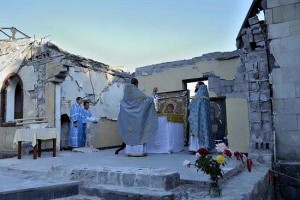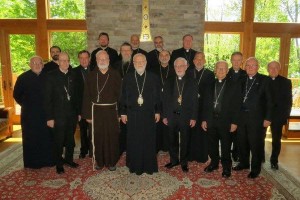 A photo taken today (23 May 2016) at a meeting of the Joint Committee of Orthodox-Catholic Bishops (meeting at St. Methodios Faith and Heritage Center) in Contoocook, NH.
A photo taken today (23 May 2016) at a meeting of the Joint Committee of Orthodox-Catholic Bishops (meeting at St. Methodios Faith and Heritage Center) in Contoocook, NH.
Category: Eastern Church
Raymond Thomas Gawronski meets the Lord
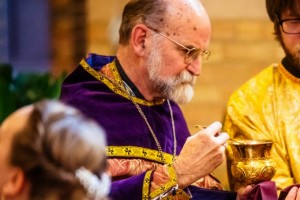 A man who followed Christ to the priesthood and to the personal companionship in the spiritual life died recently. Jesuit Father Raymond Thomas Gawronski, 65, died after living with cancer on 14 April 2016. His most recent ministry was to serve as professor of dogmatics at St. Patrick’s Seminary and University in Menlo Park, California.
A man who followed Christ to the priesthood and to the personal companionship in the spiritual life died recently. Jesuit Father Raymond Thomas Gawronski, 65, died after living with cancer on 14 April 2016. His most recent ministry was to serve as professor of dogmatics at St. Patrick’s Seminary and University in Menlo Park, California.
I knew Father Gawronski as gifted in very many ways due to the natural gifts of his humanity and because of the integration of his intellect and life of prayer. All his friends and associates would say this. Most keenly he was nurtured by the Eastern Christianity and served as a Byzantine (Melkite) priest for the Eparchy of Newton.
In an interview with CNA, seminary rector Father Stevens said what he appreciated about Father Gawronski was the insistence he placed on integration of faith and reason: “we have to do a better job bringing together the intellectual and spiritual life.” He was speaking of the seminarians he was mentoring. Further, “That comes a lot from his work on von Balthasar. This recognition that the life of the mind and the life of the spirit cannot be seen as two separate things to be cultivated: and that was certainly apparent when he put together the spiritually program, but that’s how he approached everything. In his homilies, his spiritual direction, in his class, he just went back and forth between his life of prayer and his scholarship without skipping a beat, and I admire that so much.” Indeed, this is THE ONLY model of Christian living that’s tenable.
If you are inclined to read good theology then I would recommend Father Gawronski’s book, Word and Silence: Hans Urs von Balthasar and the Spiritual Encounter Between East and West. There is also: A Closer Walk with Christ: A Personal Ignatian Retreat.
May Father Gawronski’s memory be eternal!
Good Friday for the Orthodox Christians
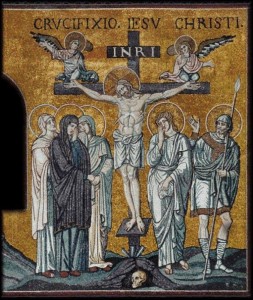 Today our Orthodox Christian brothers and sisters are observing their Paschal Triduum according to the Julian calendar. The beauty of our Church is the ability to allow different and venerable traditions to co-exist.
Today our Orthodox Christian brothers and sisters are observing their Paschal Triduum according to the Julian calendar. The beauty of our Church is the ability to allow different and venerable traditions to co-exist.
We can do nothing apart from the Paschal Mystery of Christ. Hence, it is key to keep in mind that the Cross and Resurrection is central to our Hope in communion with God. In this Mystery we come to know the transformative nature of Love. Regrettably, too many Catholics and dare I say, Orthodox, have forgotten the centrality of the Mystery.
Let us pray for our Orthodox brethren during these days.
“Today he who hung the earth upon the waters is hung upon a Tree,
He who is King of the Angels is arrayed in a crown of thorns.
He who wraps the heaven in clouds is wrapped in mocking purple.
He who freed Adam in the Jordan receives a blow on the face.
The Bridegroom of the Church is transfixed with nails.
The Son of the Virgin is pierced by a lance,.
We worship your Sufferings, O Christ,
We worship your Sufferings, O Christ,
We worship your Sufferings, O Christ,
Show us also your glorious Resurrection.”
~Antiphon XV, Holy Friday Matins
Rebuild my church
New Patriarch of the Assyrian Church of the East, Mar Gewargis III
This is old news for some, but it bears sharing here because it opens up the valued question of communio. The Assyrian Church of the East, of the ancient Christian churches, has good news in their attempt to revision their ministry in the 21st century. Christine Chaillot wrote the following piece trying to explain the complexities of this particular church. Let us pray for the Christians in Iraq, Catholic and Orthodox as they make their way in the face of the Islamist regime. The communion of churches and how we witness to Christ in the error of war and ideology is going to make or break Christianity.
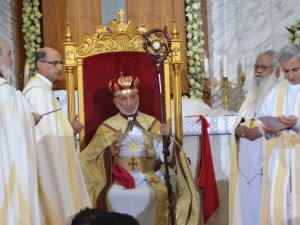 On September 22, 2015, the journalist, John Burger [a New Haven, CT resident], entitled his article : «As Refugees Stream. Out of Middle East, One Exiled Church May Be Headed Back. Assyrian Church of the East elects a new leader, and they may be already building his home in war-weary Iraq.
On September 22, 2015, the journalist, John Burger [a New Haven, CT resident], entitled his article : «As Refugees Stream. Out of Middle East, One Exiled Church May Be Headed Back. Assyrian Church of the East elects a new leader, and they may be already building his home in war-weary Iraq.
The return of the Church of the East to Erbil to elect the new Catholicos-Patriarch is highly significant. In 1933 Mar Shimun XXIII Eshaia, the Catholicos-Patriarch of the Assyrian Church of the East was obliged to leave Iraq and went into exile in the USA where the see was established in Chicago. When his successor, Mar Dinkha IV, passed away on March 26 2015 after an incumbency of almost forty years, elections were organised and the Holy Synod chose Mar Gewargis III who was enthroned at St. John’s Cathedral in Erbil on Sunday, Sept. 27 2015. He had previously been Metropolitan of Iraq, Jordan and Russia. Born in Habbaniyah, Iraq and educated at the University of Baghdad, prior to his ordination as a deacon in 1980, Mar Giwargis taught English in several Iraqi schools. In 1981, he was elevated to Metropolitan of Baghdad and all Iraq. His long experience of life and politics in Iraq, with its accompanying political upheaval and displacement will be invaluable in steering the Church of the East.
The consecration of Catholicos-Patriarch Gewargis III was attended by an international array of bishops from the Church of the East, who travelled from the USA, Canada, Australia, Iran, Syria and Sweden (where the bishop is responsible for all Europe) and of course India where the Church of the East was the first Christian presence since the beginning of Christianity, in Kerala (south west India). Also present were representatives of several Churches from Iraq (among them the Chaldean Catholic Patriarch Mar Louis Sako and bishops, the Syrian Orthodox Patriarch Ephrem and bishops) and from abroad, including from the Vatican and from the World Council of Churches. Political personalities were also present, including a Chinese delegate, recalling the remarkable misssionary activity that the Church of the East conducted for almost a millennium across Iran, Afghanistan and Central Asia reaching Mongolia and China. Today, the Church of the East has a new internationalism, but is firmly rooted in Mesopotamia.
Christianity has been present in Iraq since apostolic times; its founders were St Thomas of the Twelve Disciples and Ss. Addai (Thaddaeus) and Mari of the Seventy Apostles. The first location of the see of the Church of the East was in Seleucia-Ctesiphon, then the Persian capital, near present Baghdad. In the 9th century the patriarchate moved to Baghdad and then through various cities in what is now northern Iraq and also northwest Iran. In September 2015 the see was transfered from Chicago to Erbil, the present capital of the Kurdistan Regional Government (KRG) administered region of northern Iraq, a move that returned to historic roots since Erbil, the capital of the kingdom of Adiabene, was a very early bishopric in the first centuries of the Christian era. Currently, a new patriarchal building (on a grand avenue and opposite a large, new mosque) is being built in Erbil, on land donated by the KRG authorities. At the time of the consecration of Mar Gewargis III, the construction had not yet been completed, but the extensive grounds should also accommodate auxiliary buildings, including a seminary and a print-shop.
As well as physical growth, there have been attempts to heal the schism between the Assyrian Church of the East and the Ancient Church of the East that erupted in the mid 1960’s. The patriarch of the Ancient Church of the East, Mar Addai, has resided in Bagdad since 1964. Talks prior to the patriarchal election aimed at reconciliation. Although the reunification of the two factions has not yet been realised, further negotiation to this end will continue in the future. The patriarchal election heralds a new era for the Church of the East and all Christians in Iraq and the Middle East. As hundreds of thousands of people stream from war-torn areas of the Near East and Africa into Europe and elsewhere —and Christian leaders are desperately trying to keep their flocks in their ancestral homelands— the return of the Church of the East to the KRG admininistered region of northern Iraq in order to have the see ‘back home’ and for the Catholicos-Patriarch to be close to his faithful and encourage them to stay in their traditional homeland is heroic and very Christian. The return of the Catholicos-Patriarch within their midst is celebrated with great joy by all the faithful of the Church of the East in Iraq and also by the diaspora communities.
Christianity without persecution? Armenian people were persecuted
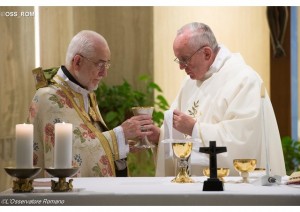 This morning in Rome the Holy Father offered Holy Mass with the recently-elected Patriarch of Cilicia of the Armenians, His Beatitude Gregory Peter XX Ghabroyan, as well as with the Bishops of Synod of the Apostolic Armenian Catholic Church and Cardinal Leonardo Sandri (Prefect of the Congregation for Eastern Churches).
This morning in Rome the Holy Father offered Holy Mass with the recently-elected Patriarch of Cilicia of the Armenians, His Beatitude Gregory Peter XX Ghabroyan, as well as with the Bishops of Synod of the Apostolic Armenian Catholic Church and Cardinal Leonardo Sandri (Prefect of the Congregation for Eastern Churches).
The new Patriarch has taken up the spiritual leadership in a time of Christian persecution and I am sure he’s not going to refrain from speaking out against the injustices and spilling of Christian blood. We need his voice, and that of all the Christian leaders to raise our awareness of these crimes.
In recent months more and more attention has been given by the Pope to the tragic events of the early 20th century that killed many of the Armenians and denied by members of the Turkish government. “Perhaps more than in the early days,” said Pope Francis, [Christians] are persecuted, killed, driven out, despoiled, only because they are Christians”:
“Dear brothers and sisters, there is no Christianity without persecution. Remember the last of the Beatitudes: when they bring you into the synagogues, and persecute you, revile you, this is the fate of a Christian. Today too, this happens before the whole world, with the complicit silence of many powerful leaders who could stop it. We are facing this Christian fate: go on the same path of Jesus. One of many great persecutions: that of the Armenian people”:
“The first nation to convert to Christianity: the first. They were persecuted just for being Christians,” he said. “The Armenian people were persecuted, chased away from their homeland, helpless, in the desert.” This story – he observed – began with Jesus: what people did, “to Jesus, has during the course of history been done to His body, which is the Church.”
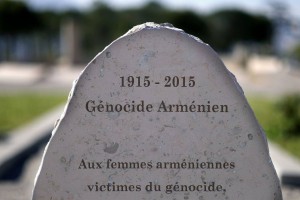 “Today, I would like, on this day of our first Eucharist, as brother Bishops, dear brother Bishops and Patriarch and all of you Armenian faithful and priests, to embrace you and remember this persecution that you have suffered, and to remember your holy ones, your many saints who died of hunger, in the cold, under torture, [cast] into the wilderness only for being Christians.”
“Today, I would like, on this day of our first Eucharist, as brother Bishops, dear brother Bishops and Patriarch and all of you Armenian faithful and priests, to embrace you and remember this persecution that you have suffered, and to remember your holy ones, your many saints who died of hunger, in the cold, under torture, [cast] into the wilderness only for being Christians.”
The persecution of Christians happens in a profound way today. “We now, in the newspapers, hear the horror of what some terrorist groups do, who slit the throats of people just because [their victims] are Christians. We think of the Egyptian martyrs, recently, on the Libyan coast, who were slaughtered while pronouncing the name of Jesus.”
The Pope’s prayer was that the Lord might, “give us a full understanding, to know the Mystery of God who is in Christ,” and who, “carries the Cross, the Cross of persecution, the Cross of hatred, the Cross of that, which comes from the anger,” of persecutors – an anger that is stirred up by “the Father of Evil”:
“May the Lord, today, make us feel within the body of the Church, the love for our martyrs and also our vocation to martyrdom. We do not know what will happen here: we do not know. Only Let the Lord give us the grace, should this persecution happen here one day, of the courage and the witness that all Christian martyrs have shown, and especially the Christians of the Armenian people.”
Maronite Servants of Christ the Light
There is a new expression of religious life for women in the Maronite Church in the USA with the Congregation of Sisters called the Maronite Servants of Christ the Light. They were founded in 2008 under the guidance of Bishop Gregory Mansour. Even if you are not discerning a vocation, I would recommend watching this video.
Here’s the blog: Radiate His Light
Gregory of Narek’s brief narrative
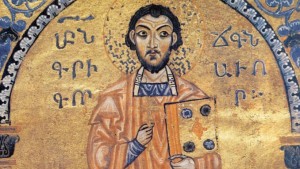 You may recall that Pope Francis, in February 2015, declared as a Doctor of the Church the sainted Armenian monk and poet, Gregory of Narek (950-c. 1005). He is only one of 36 by the Roman Church.
You may recall that Pope Francis, in February 2015, declared as a Doctor of the Church the sainted Armenian monk and poet, Gregory of Narek (950-c. 1005). He is only one of 36 by the Roman Church.
Many wondered about the person of Gregory and his importance in the Church today. Being declared a Doctor of the Church is one of the most singular distinctions that the Supreme Pontiff could give to one of the saints, but way this monk and poet of the Armenian Church, and why now? Why is this gesture of Pope Francis a key event?
In Michael LaCivita’s article, “Cries from the Heart: Armenia’s Poet of the Soul” gives a fine introduction to this Doctor of the Church.
Christians At Risk
Help make a difference at ChristiansAtRisk.org
#ChristiansAtRisk
New Armenian Catholic Patriarch of Cilicia
Today, Po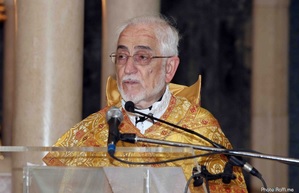 pe Francis responded to the letter of the new Armenian Catholic Patriarch of Cilicia, His Beatitude, Grégoire Pierre XX Ghabroyan, requesting ecclesiastical communion with him, and See of Rome. With this letter of the Holy Father communion between the two churches is confirmed.
pe Francis responded to the letter of the new Armenian Catholic Patriarch of Cilicia, His Beatitude, Grégoire Pierre XX Ghabroyan, requesting ecclesiastical communion with him, and See of Rome. With this letter of the Holy Father communion between the two churches is confirmed.
In history, the patriarch was known as Bishop Krikor Ghabroyan (emeritus bishop of the Eparchy of France having retired in 2013). As with the bishop of Rome, the new Patriarch has assumed a new name. A new name and office bears a new title: Grégoire will carry the title of “Catholicos-Patriarch of Cilicia of the Armenians” and the patriarchal headquarters is located in the convent of Bzommar and his residence in Beirut.
Pope Francis’ letter indicates his joy at the Patriarch’s election with the hope that his new ministry will bear many fruits for the Kingdom. One line worth noting: “illuminated by the light of faith in the risen Christ, our vision of the world is full of hope and mercy, because we are certain that the Cross of Jesus is the tree that gives life.”
His Beatitude Grégoire Pierre XX succeeds Patriarch Nerses Bedros XIX Tarmouni who died on June 25, 2015.
The Armenian Catholic Patriarch of Cilicia has jurisdiction over 18 eparchies world-wide.
His Beatitude Grégoire Pierre was born on November 15, 1934 in Aleppo, Syria, ordained a priest March 28, 1959, and consecrated bishop 13 February 1977. At his next birthday the Catholicos will be 81.
